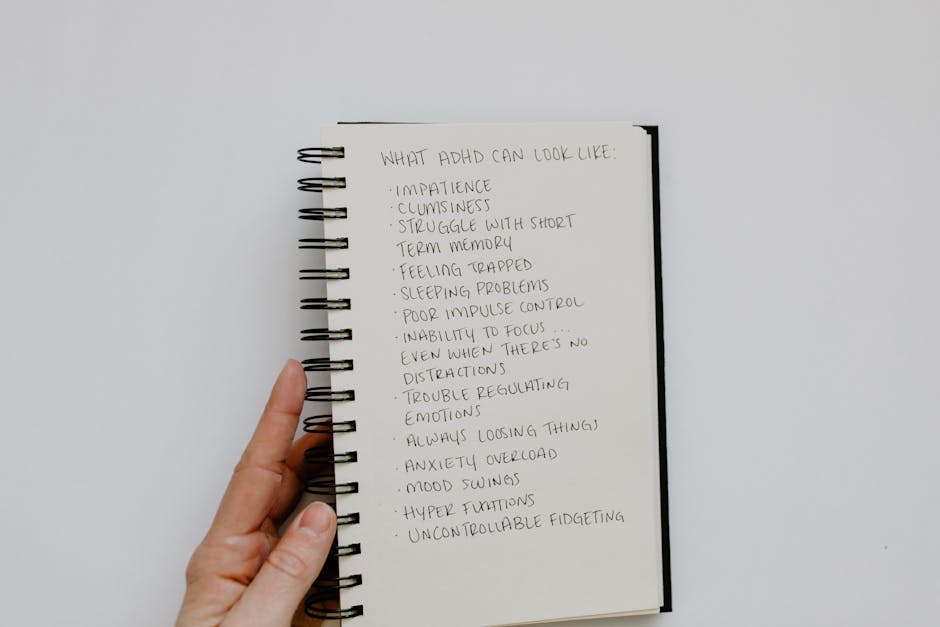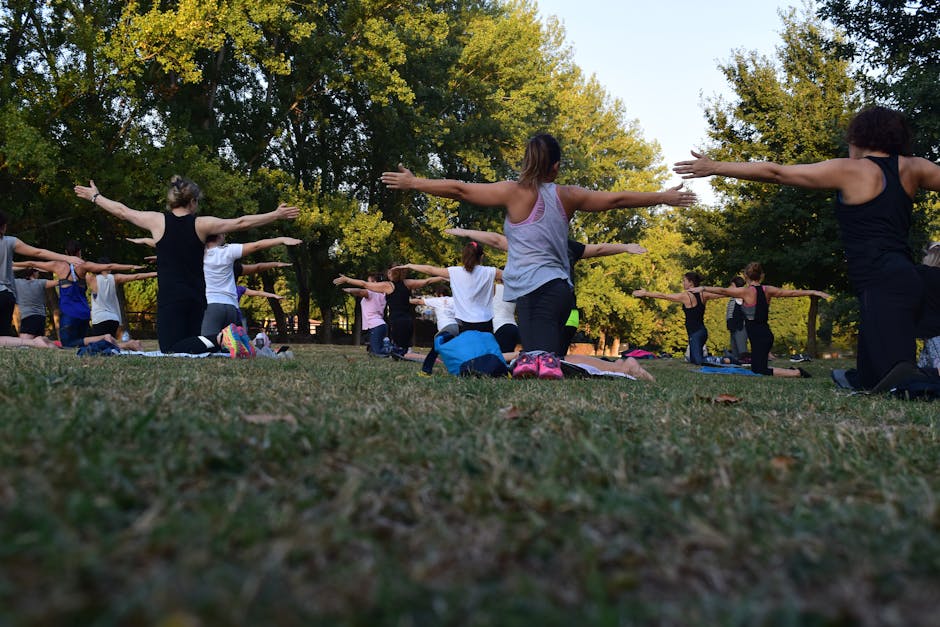Fitness Beyond Movement: Unlock Mindfulness for Effective Workouts
In a world where hustle often overshadows health, how can we harness our inner selves to enhance workout effectiveness? The intertwining of fitness and mindfulness could be the secret key you've been searching for. This exploration delves into how being more present during your exercise regime not only improves performance but also transforms your entire fitness journey into a holistic experience.
Understanding Mindfulness in Fitness
Mindfulness, simply put, is the practice of focusing one's awareness on the present moment while acknowledging and accepting feelings, thoughts, and bodily sensations. In the context of fitness, mindfulness involves paying attention to how your body feels during workouts, recognizing your emotional states, and understanding the impact of mental well-being on physical performance.
As yoga and meditation gain popularity globally, fitness enthusiasts are increasingly realizing the benefits of applying mindfulness not just during meditation but also while working out. Research indicates that mindful workouts can lead to improved strength, faster recovery, and better mental clarity, ultimately enhancing your workout effectiveness. In fact, being present can amplify your motivation and create a deeper connection with your fitness routine, moving beyond mere physical movement into a place of emotional and mental engagement.
The Evidence Behind Mindfulness and Fitness
A systematic review published in the Health Psychological Review highlights that those who incorporate mindfulness into their fitness regimens experience less stress and a higher overall workout satisfaction. Notably, studies show that regular practitioners of mindful fitness reported experiencing less post-exercise fatigue and greater enjoyment while exercising.
Engaging your mind throughout your workout can shift your focus from performing at an optimal level to enjoyment and connection with your body. So not only are you completing your leg press, but you’re truly feeling each motion and each muscle group engaged, cultivating a stronger mind-muscle connection.
Techniques for Incorporating Mindfulness into Workouts
Incorporating mindfulness into your fitness routine doesn’t mean you need to abandon your existing workout structure; rather, it's about enhancing what you currently do. Here are some practical techniques to seamlessly blend mindfulness into your exercise regimen:
1. Breath Awareness
Breath is the foundation of mindfulness. Focus on your breathing pattern while exercising. For example, during weight lifting, synchronize your breath with your movements—inhale as you lower the weight and exhale as you lift. This technique enhances focus and helps draw attention away from distractions.
2. Visualization
Before starting your workout, visualize your goals—whether it's completing a certain number of reps or running a specific distance. Picture every detail vividly, and then channel that mental imagery as you execute your workout. This technique is particularly powerful for running or any endurance exercise.
3. Sensory Engagement

Take a moment to engage your senses fully in the workout environment. Feel the texture of the gym floor beneath your feet, listen to the rhythm of your breath, or enjoy the sounds of your surroundings. This practice anchors you in the moment and enriches your workout experience.
4. Body Scan

During your workout, perform mental body scans. Notice different muscle groups and how they feel during specific exercises. This mindfulness enhances not just awareness but also can prevent injury by helping you to adjust your movements if something feels off.
5. End with Gratitude

After your workout, spend a few minutes in gratitude. Reflect on the efforts you just put in, the sweat on your brow, and the progress you’ve made, however small. This reflective practice deepens your appreciation for both your physical body and your mental commitment to fitness.
Understanding the Neuroplasticity Connection

Mindfulness practices can lead to positive changes in brain structure and function, a concept known as neuroplasticity. When you engage in mindful activities, you're essentially wiring your brain for better focus, emotional resilience, and improved physical performance. This means that the more you practice mindfulness during your workouts, the more your brain adapts to improve your overall fitness experience.
To further explore the impact of mindfulness on fitness, check out our article on Mindful Movement and Neuroplasticity Insights. It dives deeper into understanding how our brains can evolve with practice, reshaping our very approach to fitness and well-being.
Overcoming Common Barriers to Mindfulness

As beneficial as mindfulness is for workouts, you might encounter resistance or barriers. Here are a few strategies to overcome these common obstacles:
1. Distractions

In the modern age, distractions abound—from smartphones to voices around you. To enhance mindfulness during workouts, choose a quieter place or wear noise-canceling headphones. Creating a playlist of calming or energizing music can also help keep you anchored.
2. Time Constraints

Many people cite a lack of time as a critical barrier to mindfulness in fitness. Consider setting aside even a few minutes before and after your workout for mindfulness exercises, such as breathing or visualization techniques.
3. Misconceptions

Sometimes there might be a misconception that mindfulness is synonymous with inactivity or is only relevant to practices like yoga. To counter this belief, remember that mindfulness can be practiced in any form of physical activity—from HIIT workouts to weightlifting.
The Role of Community in Mindfulness Training

Being part of a fitness community can strengthen your mindfulness practice. Participating in group classes or workshops focused on conscious movement, yoga, or meditation can create a shared understanding of the importance of mindfulness in fitness. This camaraderie can lead to mutual support and motivation, reinforcing the connection between mindfulness and workout effectiveness.
Research has shown that social support plays a vital role in sustaining motivation for fitness. Engaging in mindfulness as a group can create a shared experience that allows for exploration and deeper discussions, amplifying each member’s journey.
For more on building community within your fitness regime, delve into our exploration of wellness through dance, emphasizing the unifying power of group activities.
The Mind-Body Connection: Embodying Your Fitness Journey

Embodying a fitness routine means bringing your full self into the experience. Emphasizing the mind-body connection allows you to tap into deeper emotional reserves and increase commitment.
Mindfulness in workouts transforms the relationship you have with both your body and exercise itself. No longer a chore, lessons learned from mindfulness shift the narrative from merely counting reps to celebrating each step you take and acknowledging the journey toward your goals. It's about nourishing your body and mind, creating sisterhood, endurance, and a greater sense of achievement.
Practical Applications for Everyday Routines

To fully embrace the integration of mindfulness into your fitness routine, it’s essential to make it a daily habit. Here are some suggestions for practical mindfulness applications:
-
Start with Soft Beginnings: If you’re new to mindfulness, consider starting by incorporating a few minutes at the beginning or end of your workout. Gradually work toward performing mindfulness exercises throughout your entire workout.
-
Weekly Mindful Minutes: Allocate time each week specifically for mindfulness practices—whether it's practicing yoga, meditation, journaling, or simply sitting in nature.
-
Mindful Eating: Consider the relationship between what you consume and your fitness. Mindful eating aligns your nutritional choices with your workout goals, empowering you to feel better and obtain greater results.
-
Track Your Mindful Progress: Maintain a journal to reflect on your experiences while incorporating mindfulness into workouts. Noting your feelings before and after workouts can solidify your understanding of the impact mindfulness has on your physical and mental well-being.
Final Thoughts: Embrace Your Fitness Journey with Mindfulness
The surge in popularity of fitness regimes shows that people are eager to embrace healthier lifestyles, yet few take the time to combine this journey with mindfulness. Understanding the mind-body connection and employing it can lead to not only a more effective workout but also a transformed relationship with fitness altogether.
Integrating mindfulness may seem daunting at first, but by employing simple techniques and fostering a community, your fitness journey can truly flourish. The key lies not only in the movement but in the meaning behind the movement itself.
So, take that first step and explore how incorporating mindfulness in your fitness routine can elevate your experience, enhancing both your physical ability and mental clarity.








